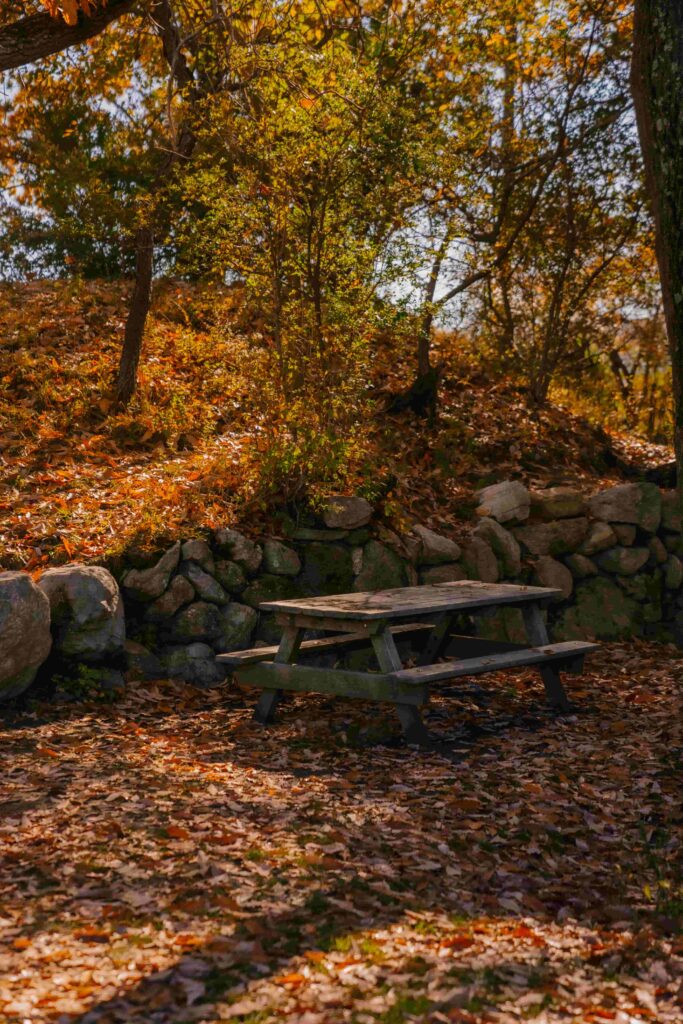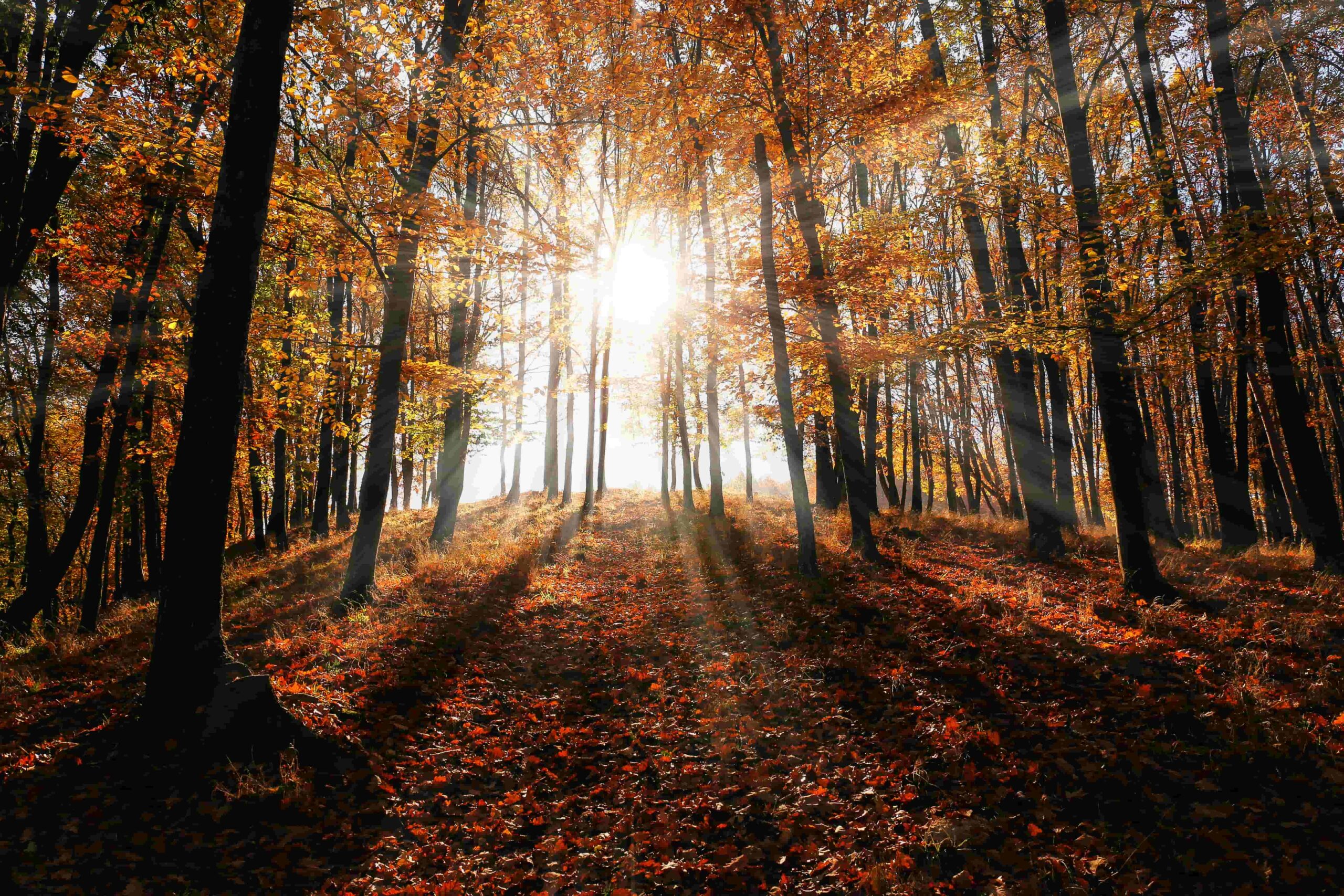Introduction
Nature never ceases to amaze us with its diverse landscapes, and one of the most enchanting is the deciduous forest. Spread across different parts of the world, deciduous forests offer a unique spectacle, particularly during the changing of seasons. In this article, we’ll explore the captivating beauty of these forests and why they are so vital to our planet.
What Are Deciduous Forests?
Deciduous forests are a unique biome where trees lose their leaves in the fall season, defining their distinct character. These forests can be found in regions with moderate rainfall and distinct seasons, such as North America, Europe, and parts of Asia.
The Cycle of Seasons
The cycle of seasons in deciduous forests is a remarkable natural phenomenon characterized by four distinct seasons – spring, summer, autumn (fall), and winter. Each season brings its own unique set of changes and challenges to the forest ecosystem:
- Spring:
- Budding and Blooming: As winter recedes and temperatures rise, deciduous trees begin to sprout new leaves and flowers. This period is marked by the blossoming of various wildflowers on the forest floor.
- Animal Activity: Many animals, including birds and insects, become more active in spring as they forage for food, build nests, and reproduce.
- Rainfall: Spring often brings increased rainfall, which nourishes the forest and provides essential moisture for plant growth.
- Summer:
- Full Canopy: By summer, the trees in deciduous forests have fully leafed out, creating a dense canopy that provides shade and cover for various species.
- Fruiting and Seed Production: Many trees produce fruits and seeds during this season, which serve as food for a variety of wildlife.
- Insect Life: Insects, such as butterflies and bees, are abundant during the summer, pollinating flowers and helping with the reproductive cycle of plants.
- Autumn (Fall):
- Foliage Change: One of the most iconic features of deciduous forests is the changing color of leaves. As the days grow shorter and temperatures drop, trees prepare for winter by reabsorbing chlorophyll from their leaves, revealing vibrant red, orange, and yellow pigments.
- Leaf Litter: Falling leaves create a carpet of leaf litter on the forest floor, which eventually decomposes and enriches the soil.
- Migration and Hibernation: Many birds and animals, such as migratory birds and hibernating mammals, make preparations for the coming winter during the fall.
- Winter:
- Leafless Trees: In the winter, deciduous trees shed all their leaves, enabling an increased amount of sunlight to reach the forest floor.
- Hibernation and Dormancy: Many animals go into hibernation or a state of dormancy to conserve energy and survive the cold season. Some creatures, like deer, adapt to winter by growing thicker fur.
- Snow Cover: In regions with cold winters, snow blankets the forest, providing insulation and water reserves for the soil.
The cycle then repeats, with each season playing a crucial role in the overall health and balance of the deciduous forest ecosystem. Spring and summer mark times of growth and reproduction, whereas autumn is a season dedicated to preparing for the challenges of winter. Winter, in turn, is a time of rest and conservation, with the cycle starting anew in the following spring as the forest awakens to another year of growth and change.
Biodiversity in Deciduous Forests
Deciduous forests are teeming with biodiversity. These areas harbor a diverse array of plant and animal species, creating a thriving ecosystem abundant with life.
Distinctive Flora and Fauna
Deciduous forests are known for their unique flora and fauna, characterized by the seasonal shedding of leaves by the trees. These forests are found in various parts of the world, and each region has its own distinctive species. The flora of deciduous forests includes a mix of broadleaf trees like oaks, maples, and beeches. Meanwhile, fauna includes deer, squirrels, and a multitude of bird species, adding to the charm of these woods.
Here are some examples of the distinctive flora and fauna found in deciduous forests:
Flora (Plants and Trees):
- Oak Trees: Oaks are common in many deciduous forests, and they support a wide range of wildlife. Acorns, their nuts, are an important food source for many animals.
- Maple Trees: Maple trees are renowned for their brilliant autumn foliage, which adds vibrant colors to the forest. Maple syrup is obtained by tapping sugar maple trees.
- Beech Trees: Beech trees are known for their smooth, silver-gray bark and produce small, triangular nuts that are consumed by various animals.
- Dogwood: These small, flowering trees add beauty to the understory with their showy blossoms.
- Ferns: Many species of ferns thrive on the forest floor, creating lush carpets in the understory.
- Wildflowers: Deciduous forests are often dotted with a variety of wildflowers, including trilliums, violets, and mayapples.
Fauna (Animals):
- White-Tailed Deer: These graceful herbivores are a common sight in deciduous forests and play a crucial role in shaping the ecosystem by their browsing habits.
- Eastern Gray Squirrel: Squirrels are expert seed dispersers in the forest, often burying nuts and forgetting them, which leads to tree regeneration.
- Eastern Chipmunk: Chipmunks are small, striped rodents that are often seen scurrying on the forest floor, collecting food.
- Raccoon: Raccoons are highly adaptable and opportunistic omnivores, known for their clever foraging skills.
- Black Bear: In some deciduous forests, black bears can be found. They are omnivorous and forage for a variety of foods, including berries, nuts, and small mammals.
- Wild Turkeys: These large birds are known for their striking plumage and are often seen foraging on the forest floor.
- Bobcat: In some regions, the elusive bobcat roams deciduous forests, preying on smaller animals like rabbits and squirrels.
- Eastern Box Turtle: These terrestrial turtles are adapted to forest environments and are often encountered on the forest floor.
- Songbirds: Various songbirds, such as warblers, thrushes, and woodpeckers, are prolific in deciduous forests and contribute to the melodic soundscape.
- Salamanders: Numerous species of salamanders, including the red-backed salamander and the spotted salamander, thrive in the moist leaf litter and fallen logs.
These are just a few examples of the diverse and unique flora and fauna that inhabit deciduous forests. The changing seasons and the annual leaf fall create a dynamic environment that supports a wide range of species and ecological interactions.
The Importance of Deciduous Forests

Deciduous forests are ecologically significant and provide a wide range of benefits, making them vital for both the environment and human society. They help to filter the air, provide habitats for numerous creatures, and serve as a source of timber and various forest products. Here are some key reasons why deciduous forests are important:
- Biodiversity: Deciduous forests are home to a rich diversity of plant and animal species. They provide habitat for numerous mammals, birds, insects, and fungi, many of which are adapted to the changing seasons and leaf fall. This biodiversity contributes to the overall health of the planet.
- Carbon Sequestration: Deciduous trees play a crucial role in reducing greenhouse gas levels by absorbing carbon dioxide from the atmosphere through photosynthesis, contributing to the mitigation of climate change.
- Clean Water: Deciduous forests act as natural filters, helping to purify water as it percolates through the soil. They reduce erosion, prevent sedimentation in water bodies, and maintain the quality of freshwater resources.
- Soil Health: The leaf litter from deciduous trees, when it falls and decomposes, enriches the forest soil with organic matter and nutrients. This enhances soil fertility and supports a healthy forest ecosystem.
- Recreation and Aesthetics: Deciduous forests provide recreational opportunities for people, including hiking, birdwatching, and simply enjoying the beauty of the changing seasons. They offer respite from the stresses of urban life and serve as places for cultural and aesthetic appreciation.
- Timber and Non-Timber Forest Products: Deciduous forests are sources of valuable timber, including hardwoods like oak and maple. Additionally, they provide non-timber forest products such as nuts, fruits, and medicinal plants, which have economic and cultural significance.
- Wildlife Habitat: These forests offer essential habitat for numerous wildlife species, supporting their life cycles, from breeding and nesting to overwintering.
- Erosion Control: The dense canopy and leaf litter of deciduous forests help reduce soil erosion, which is particularly important in hilly and mountainous regions.
- Pollination: Many tree and plant species in deciduous forests rely on pollinators, such as bees and butterflies, for reproduction. Healthy forests contribute to pollinator diversity, benefiting agriculture and natural ecosystems.
- Educational and Scientific Value: Deciduous forests are living laboratories for scientific research and education. They offer insights into ecology, climate, and biodiversity, which help us better understand our natural world.
- Cultural and Traditional Significance: Many indigenous groups around the world attach cultural and spiritual value to deciduous forests. Their customs and beliefs frequently center around these woodlands.
- Adaptive Resilience: Deciduous trees adapt to the changing seasons by shedding their leaves, demonstrating the resilience of nature. Understanding how they cope with these cycles can inform strategies for climate adaptation and resilience.
Threats to Deciduous Forests
Sadly, these beautiful forests are under threat from deforestation, habitat loss, and climate change. The need to protect and preserve them is more significant than ever.
Conservation Efforts
Conservation efforts for deciduous forests are crucial to protect these diverse and ecologically important ecosystems. Here are some common strategies and initiatives aimed at the conservation of deciduous forests:
- Protected Areas and National Parks:
- Establishing and maintaining protected areas and national parks is a fundamental step in conserving deciduous forests. These areas provide a safe haven for diverse flora and fauna, allowing them to thrive undisturbed.
- Reforestation and Afforestation:
- Planting native deciduous tree species and restoring degraded forest areas through reforestation and afforestation efforts can help increase the forested area and biodiversity.
- Habitat Restoration:
- Efforts to restore degraded habitats within deciduous forests are vital. This can include removing invasive species, reestablishing native plant communities, and creating suitable conditions for wildlife.
- Conservation of Key Species:
- Protecting and conserving endangered or keystone species within deciduous forests, such as the European bison in Białowieża Forest, can have cascading positive effects on the entire ecosystem.
- Forest Management Practices:
- Implementing sustainable forest management practices that balance human needs with conservation goals is crucial. These practices include selective logging, prescribed burns, and the protection of old-growth forests.
- Wildlife Corridors:
- Establishing wildlife corridors or greenways connecting fragmented forest areas allows animals to migrate, find food, and maintain genetic diversity.
- Education and Outreach:
- Raising awareness about the value of deciduous forests and their importance for biodiversity, carbon sequestration, and clean water sources can lead to greater public support for conservation efforts.
- Research and Monitoring:
- Ongoing research and monitoring programs help scientists and conservationists better understand the health and dynamics of deciduous forests. This information informs conservation strategies and adaptive management.
- Collaboration and Partnerships:
- Collaboration between governments, non-governmental organizations (NGOs), local communities, and private landowners can be a powerful force in conserving deciduous forests. Partnerships can lead to shared responsibilities and resources.
- Climate Change Mitigation:
- Addressing climate change is critical for deciduous forest conservation. Efforts to reduce greenhouse gas emissions and adapt to changing climate conditions are important components of conservation.
- Promotion of Sustainable Tourism:
- Encouraging responsible tourism and sustainable practices in and around deciduous forests can help fund conservation efforts and raise awareness about the importance of these ecosystems.
Conserving deciduous forests is a multifaceted endeavor that requires a combination of scientific knowledge, policy support, community engagement, and international cooperation. By implementing these strategies, we can help ensure that these unique ecosystems continue to provide habitat for diverse species and offer vital ecological services to our planet.
Famous Deciduous Forests Around the World
Deciduous forests can be found in various parts of the world and are famous for their biodiversity and seasonal beauty. Here are some well-known deciduous forests from around the world:
- Black Forest, Germany: The Black Forest, or Schwarzwald in German, is renowned for its dense woodlands, rolling hills, and picturesque villages. Hikers and nature lovers love it since it is home to a wide range of wildlife.
- Great Smoky Mountains, United States: Located on the border of North Carolina and Tennessee, this National Park is a UNESCO World Heritage site and one of the most visited national parks in the United States. It features rich deciduous forests, diverse flora, and abundant wildlife.
- Sherwood Forest, England: Famous for its association with the legendary outlaw Robin Hood, Sherwood Forest is a historic woodland in Nottinghamshire. It’s known for its ancient oak trees and unique ecosystem.
- Jiuzhaigou Valley, China: This UNESCO World Heritage site in Sichuan province is home to a stunning array of colorful lakes, waterfalls, and lush deciduous forests. It’s celebrated for its biodiversity, including the giant panda.
- Białowieża Forest, Poland and Belarus: Białowieża Forest is one of the last and largest parts of the primeval forest that once covered much of Europe. It’s famous for its old-growth trees and as the habitat of the European bison, Europe’s heaviest land animal.
- Great Otway National Park, Australia: Located in Victoria, this national park features temperate rainforests and cool temperate rainforests with a mix of evergreen and deciduous trees. It’s home to diverse flora and fauna, including the elusive platypus.
- New England, United States: The New England region, including states like Vermont, New Hampshire, and Maine, is known for its vibrant fall foliage as the deciduous trees change color. It’s a popular destination for “leaf peeping” in the autumn.
- Croatian Forests, Croatia: Croatia’s forests, such as Plitvice Lakes National Park, offer breathtaking scenery with cascading waterfalls, crystal-clear lakes, and diverse deciduous and evergreen tree species.
- Margalla Hills National Park, Pakistan: Located near Islamabad, this park features a mix of deciduous and evergreen trees and offers opportunities for hiking and bird-watching in a beautiful natural setting.
- Dandenong Ranges, Australia: These lush, temperate rainforests near Melbourne are home to towering mountain ash trees, tree ferns, and a range of bird species. The area is a popular spot for tourists and nature lovers.
These famous deciduous forests showcase the beauty and ecological importance of such ecosystems around the world. They attract visitors and researchers alike, contributing to our understanding of these unique environments.
Conclusion
Deciduous forests are a treasure trove of natural beauty and are of immense ecological, economic, and cultural importance. They contribute to our overall well-being by supporting biodiversity, mitigating climate change, and providing a host of ecosystem services. Conservation and sustainable management of these forests are essential to ensure their continued benefits for current and future generations. It’s our responsibility to ensure that future generations can continue to unveil the wonder of these enchanting landscapes.
FAQs
1. Are deciduous forests only found in North America?
No, There are deciduous forests all across the world, especially in portions of Asia and Europe. Each region offers its unique charm and biodiversity.
2. Why do deciduous trees shed their leaves in the autumn?
Deciduous trees shed their leaves as a survival strategy for conserving water and energy during the colder months.
3. Can deciduous forests be visited year-round?
Yes, deciduous forests offer different experiences throughout the year, from the vibrant colors of autumn to the tranquility of winter.
4. How can I contribute to the conservation of deciduous forests?
Supporting organizations dedicated to forest conservation and making sustainable choices in your daily life can help protect these valuable ecosystems.
5. Are there guided tours available for exploring deciduous forests?
Yes, in many regions, you can find guided tours and nature programs that allow you to explore deciduous forests safely and learn more about their unique features.

